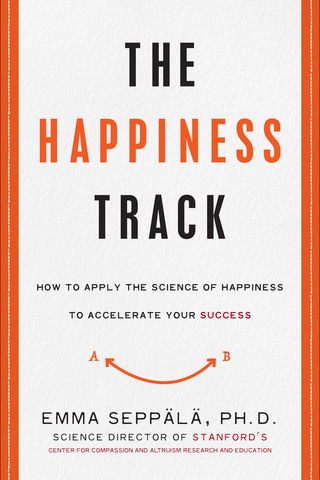Our culture is obsessed with productivity. But research shows that stressing ourselves out over an ever-expanding to-do list actually works against us—no matter how “productive” we may feel. After all, we're seeing 50% burnout rates across industries.
Not only does workaholism double the risk of depression and anxiety, it actually lowers productivity and decreases work performance, according to research by Steven Sussman at the University of Southern California. It also leads to sleep problems and shortened attention spans, both of conspire to get in the way of our ability to do good work. Workaholism is bad for employers as well: it leads to stress-related accidents, absenteeism, higher employee turnover, lower productivity and higher medical costs.
So why have we gotten caught up in a frantic approach to productivity? As a Stanford University research psychologist who has spent years looking into this literature, I believe the problem lies in our constant focus on the future – we believe we always have to look ahead in order to succeed and be happy. This belief leads us to forego personal happiness in the present and spend our days hunched over our computers, grinding our teeth and reassuring ourselves that the eventual payoff will be worth it.
But the truth is that nonstop focus on our work leads to the opposite of what we want: we are stressed, tired and never satisfied because there’s always something more to be done. Two simple changes could make us much better off.
1. Detach When You're Not Working
First, detaching from work can actually make us more productive. Sabine Sonnentag, a professor of organizational psychology at the University of Mannheim in Germany, has found that people who do not know how to detach from work during their downtime experienced increased exhaustion over the course of one year and became less resilient in the face of stressful work conditions. By contrast, gaining some emotional distance from highly demanding work tends to help people recover from stress faster and leads to increased productivity.
“From our research, one can conclude that it is good to schedule time for recovery and to use this time in an optimal way,” Sonnentag shared with me. Recommended activities include exercise, walks in nature, and total absorption in a hobby that’s unrelated to work—whether that’s shooting hoops with friends, doing some woodcarving in the garage or learning to make dim sum. Positively reflecting about your job after work hours can also help replenish you, according to research by Sonnentag and Wharton Professor Adam Grant. In other words, thinking about the good sides of your work at the end of your workday – in particular about the ways in which you are benefitting others - results in higher well-being and happiness. If your work directly benefits others (e.g. you are a firefighter or a nurse), this exercise will be straightforward. If, however, you don’t feel that your work product benefits others substantially, you can still think about how your work is impacting others in a positive way. For example, it is benefitting your family. Or your attitude at work is benefitting your colleagues. Research shows that, when we are engaged in any kind of prosocial or kind action, we become happier.

2. Calm Down Rather than Amping Up
Our addiction to caffeine and other stimulants is another big issue. In the name of productivity, we have learned to keep our adrenaline levels high with copious amounts of coffee. Caffeine is a drug - albeit a socially accepted one. It is a stimulant. When we drink coffee, it raises cortisol (the “stress” hormone) above its natural levels. Cortisol is naturally occurring in our body – it helps us wake up in the morning and have energy to start the day. However, raising it to unusual levels through coffee is the reason we sometimes feel so jittery after consuming caffeine.
This means we wind up depending on anxiety to fuel ourselves to get through our overscheduled days. Other people may rely on stimulants like sugar, energy drinks and even potentially addictive drugs like Adderall to help themselves stay up and focus for long hours.
Then, over-stimulated and unable to calm down when we come home, we turn to depressants like alcohol, sleeping pills or anti-anxiety medication to achieve balance. The constant back-and-forth between stimulant-induced anxiety and depressant-induced drowsiness places an enormous burden on our already exhausted nervous system.
Cutting back on stimulants and cultivating calmness in your life - through yoga, walks in nature, and tech-fasts, for example - can help you turn down the dial on your adrenaline-filled life. By balancing these calming activities with the more high-intensity demands of your life, you will end up managing your energy better, having more emotional intelligence and making better decisions.
3. Breathe
Research that I led with veterans (arguably some of the most stressed individuals in our society when they return from war) shows that learning conscious breathing (sudarshan kriya yoga) can help significantly reduce our stress and anxiety levels—sometimes in minutes. Breathing is among the most neglected solutions to stress, since it mostly happens on its own while we’re not paying attention to it.
But research suggests that you can change how you feel using your breath. By taking deep breaths into your abdomen and lengthening your exhales so they are longer than your inhales helps your nervous system relax – your heart rate and blood pressure may even decrease. Having a more relaxed nervous system will actually help provide you with more energy. Instead of wearing yourself out quickly with adrenaline, by remaining calm and engaging your parasympathetic nervous system, you will be able to restore yourself and manage your energy throughout the day without crashing.
There is little evidence that leading an adrenaline-fueled life makes you more productive. However, there is plenty of evidence to show that a chronically stressful lifestyle damages your physical health and your cognitive faculties. So if you’re really interested in becoming a more accomplished and happier person, stop driving yourself up the wall with productivity hacks—and commit to learning how to take a breather.

Based on a section of my new book The Happiness Track: How to Apply the Science of Happiness to Accelerate Your success (HarperOne, 2016)
Alternate Nostril Breathing:
Place the index and middle finger of the right hand on the center of the eyebrow, and place the thumb on the right nostril, and the ring finger and pinky on the left nostril. The left hand rests on the lap, palm facing up. Take a deep breath in and, closing the right nostril with your thumb, breathe out through the left nostril. Then take a deep breath in through the left nostril, close the left nostril with your ring finger and pinky at the end of the inhale, and exhale through the right nostril. Take a deep breath in through the right nostril and, closing the right nostril with the thumb, exhale on the left side, and start over. Do this with your eyes closed for about five minutes. Notice the effects on your body and mind.
Article originally appeared at psychologytoday.com









